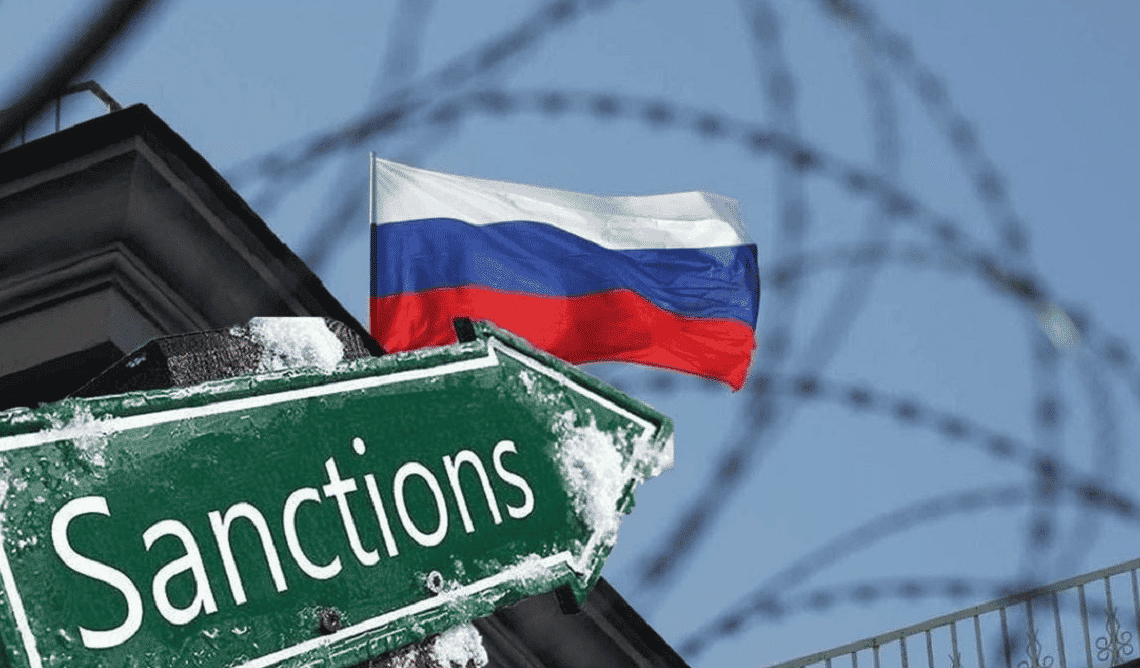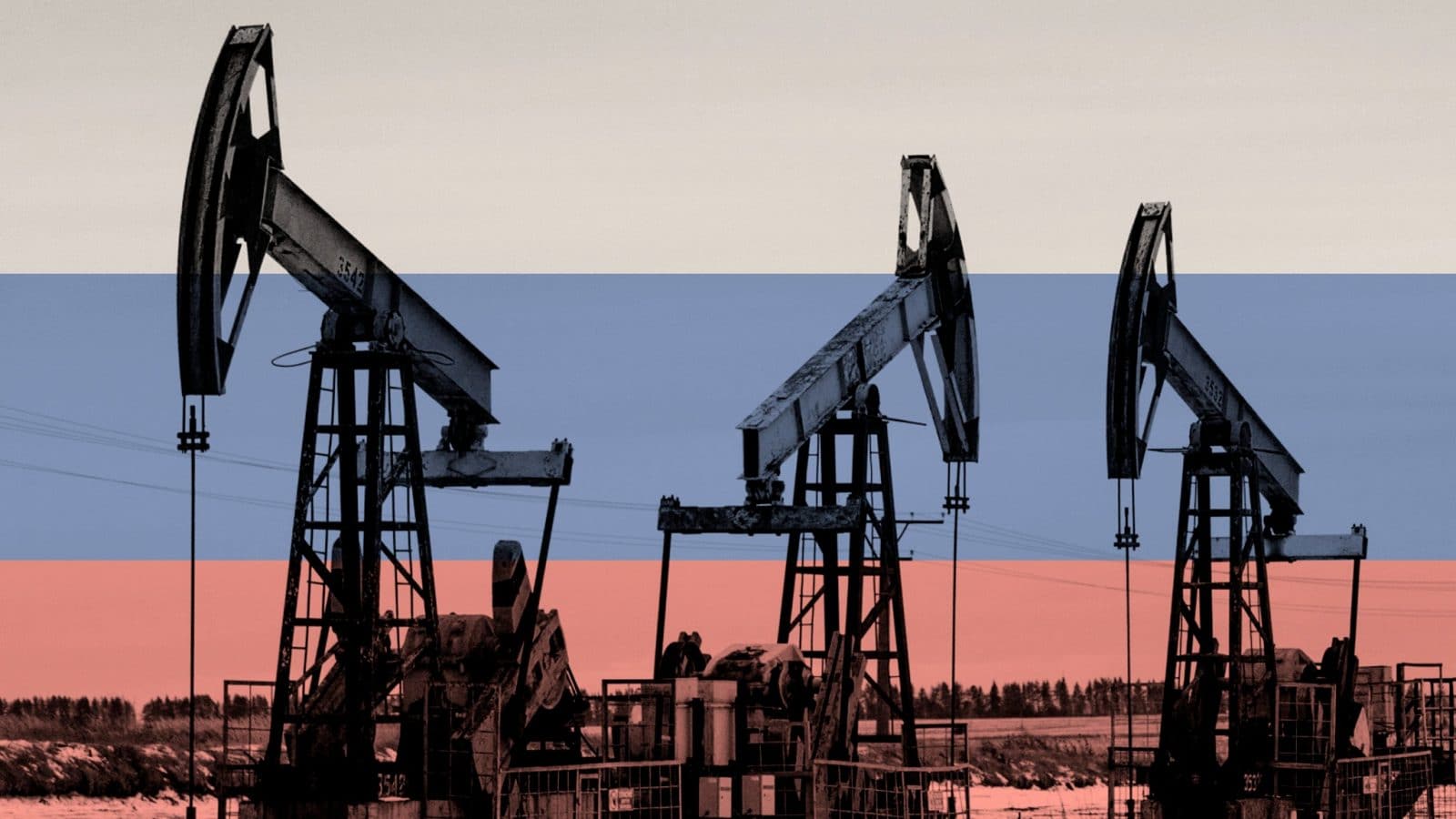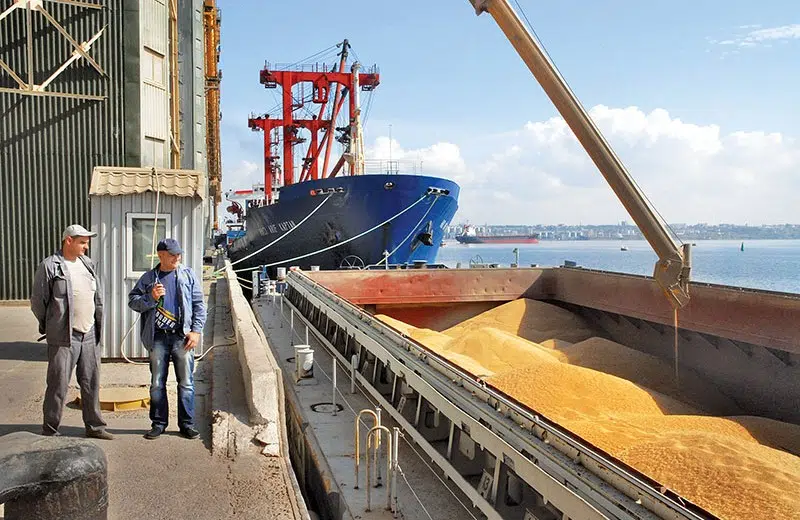Table of Contents
About why the blockade of the Black Sea initiated by Russia will ultimately lead to the economic exhaustion of Ukraine, and why it needs to be lifted as soon as possible — more details on RBС-Ukraine.
The grain deal, which lasted for a year, has come to an end. Russia withdrew from it unilaterally and immediately informed the world that any ships heading to Ukrainian ports would be considered as carrying military cargo and therefore a threat. The world swallowed this terror, much like it did last year, legitimizing it in the name of fighting global hunger.
The Ukrainian authorities acknowledge that the grain agreement was a forced step and existed solely to allow farmers to export last year’s harvest and not disrupt the planting of the 2023 season. Even at the time of its signing, it was clear to everyone that Russia would use it for blackmail.
And so it happened — almost every month, the aggressor would demonstratively withdraw from it, demanding more and more concessions from the sanctions pressure. Thus, from the opportunity to export grain last year, the Kremlin went as far as regaining access to SWIFT for its Russian Agricultural Bank.
The involvement of the UN in the grain agreement effectively legalized the “right to terror” at sea. Russia obtained unprecedented rights for full control over the external trade of a sovereign state in the Black Sea, as well as controlling functions in the Bosporus Strait, not provided for by the Montreux Convention. The international community witnessed audacious piracy in action. And unfortunately, de facto, it agreed to such a state of affairs.
Meanwhile, the inspections carried out by Russia on Ukrainian ships carrying grain became increasingly prolonged, resulting in over a hundred vessels accumulating in the strait, awaiting their turn for this humiliating inspection. Russians openly revel in their ability to prolong these inspections — this is indicated by a secret report prepared for the Kremlin. And the world watches as ships wait for Ukrainian wheat in Africa for months.
In essence, the grain agreement became a “satisfaction for one.” Russia gained maximum benefits from the deal: the opportunity to expand grain exports, complete control over Ukrainian exports, and carte blanche for blackmailing the world with hunger. The world, while receiving a “plus in karma” for solving the grain supply issue in African countries, simultaneously incurred a tremendous negative consequence — it demonstrated its complete helplessness in the face of a modern pirate. As for Ukraine, even though it managed to export a portion of the grain, it is missing out on billions because it still lacks the ability to export other product groups by sea.
That’s why now, as calls for the revival of this maritime transportation format are beginning to emerge, Ukraine must unite with the world and restore the right to navigate the seas freely. Returning to the Grain Agreement is unacceptable. The only solution is to reinstate free navigation in the Black Sea and restore Ukraine’s right to export the products it wants, in the quantities it desires.
Not just grain
So many discussions about the need to continue the grain agreement might create a false impression that Ukraine never exported anything other than grain. In reality, grain accounts for one-third of maritime exports. Consequently, it represents one-third of the currency inflows Ukraine received from maritime trade before the war.
See also: Fate of the “grain corridor”: can Russia withdraw from the agreement?
The structure of external (export + import) cargo handling through Ukrainian ports in 2021 was as follows: 42% — agricultural products, 38% — mining and metallurgical products, and 22% — other cargoes.
As a result, the most affected sector from the port blockade was the mining and metallurgical complex: before the war, it had yielded a few percent of export volume to agricultural products. However, during the war, when Ukrainian grain accounted for 90% of exports, metallurgists faced a complete blockade. Currently, the capacity utilization of metallurgical plants is about 55% of pre-war production levels, while mining and beneficiation plants are at only 35%.
The port blockade also significantly impacted non-ferrous metallurgy enterprises: the export of titanium and zirconium ore and concentrate fell by 43% in 2022. Additionally, the import of bauxite — aluminum ore required for aluminum production — plummeted by 82% in 2022! This means that Ukraine not only lost the ability to export products but also, quite simply, lost the ability to produce these goods.
Ukrainian pipe industry, due to the blockade, has suffered massive losses, with production reduced by nearly 40%. Chemical industry and agrochemistry are also experiencing significant losses, as they can’t export fertilizers.
It’s also important to remember that the maritime blockade affects Ukrainian heating season. Ukraine imports a substantial portion of petroleum products and coal needed for thermal power plants to endure the winter (which, according to forecasts, might be even harsher than the previous one). Due to the absence of sea routes, coal is transported via land corridors, making each ton of coal at least twice as expensive.
Furthermore, the port blockade has a severely negative impact on the work and employment of Ukrainians in the machinery and light industries. Previously, a significant portion of imported components and equipment were delivered by sea in containers. Now, this possibility is lost, and people are unable to produce anything. Consequently, they are at home on stand-by, preserving a portion of their wages.
In fact, every Ukrainian is suffering from the blockade of maritime ports, often without realizing it — because the significant increase in the cost of living in Ukraine and the high inflation are largely provoked by the blockade. The fall in exports led to a decline in foreign currency inflows, causing the dollar to set new records almost every month. Importing goods into Ukraine, a significant portion of which are produced in Asian countries, now occurs through Europe, resulting in a minimum one-third increase in prices for items such as phones, clothing, or plates.
But the worst part is that Ukraine is losing its positions in the global markets. Russia deliberately squeezes Ukrainian producers out of the reclaimed spotlight and takes their place — as it can offer similar products at almost half the price. Simply because it has the ability to transport its goods cheaply by sea, unlike Ukraine’s producers.
The land has become a luxury item
After the blockade of ports, some exporters were forced to shift their focus to western overland crossings. However, these cannot be a full alternative to maritime ports: such transportation is inconvenient, while their cost is simply exorbitant.
The quest to “send goods by European land routes” starts at the western border crossings, where pre-war production turnover was 4-5 times smaller than the volume handled by Ukrainian seaports. Naturally, these crossings turned out to be ill-prepared to handle the required scale of production, causing freight cars to wait for their turn at the border for up to a month in some places.
The next stage of the quest is the actual ports of the EU, which are three times farther away than the Ukrainian ports. These ports were also unprepared for Ukrainian products and lack sufficient available capacity. Just for exporting Ukrainian iron ore products, we need 35-40 million tons per year, and our grain requires another 40-50 million tons. This is despite the fact that EU ports handle EU cargoes such as coal, agricultural products, and more.
The final stage is delivering the goods to the buyer, who waits for this product twice as long as stipulated in the contract. Consequently, the sender has to pay penalties, even though they are not at fault.
After the maritime blockade, logistic costs for transporting Ukrainian products have increased 4-6 times, while transportation volumes have significantly decreased.
How to reclaim the sea
According to preliminary estimates, unblocking maritime ports will allow the restoration of mining and metallurgical complex production capacities almost to the levels of 2020-2021, and increase annual tax revenues to all levels of budgets by +60%. Additionally, it will bring in over $8 billion in foreign currency revenue to Ukraine within a year. The same amount can be gained by providing trading opportunities for pipe manufacturers, chemical fertilizer producers, and machinery builders.
According to the Federation of Employers, Ukraine will experience at least a 10% increase in GDP, $18 billion in foreign currency revenue, and UAH 135 billion (USD 3,6 million) in tax revenues to budgets at all levels after the unblocking of ports. For comparison: in 2023, UAH 170 billion (USD 4,6 million) is allocated for healthcare and UAH 122 billion (USD 3,3 million) for education. Thus, Ukraine could easily finance its most crucial sectors simply by having access to its own ports. Isn’t the prize worth the effort, wouldn’t you say?
The necessity of unblocking ports for exports is recognized by the government as well. The Minister of Infrastructure, Oleksandr Kubrakov, has repeatedly emphasized that the grain agreement was a temporary solution, and Ukraine insists on free navigation in the Black Sea.
At the same time, the involvement of the international community is crucial for implementing these mechanisms, as Ukraine will require assistance.
First and foremost, Ukraine needs to approach partners to ensure it is equipped with all necessary arms so that it can independently deter any terrorist or pirate actions by Russia against shipping. This includes providing anti-missile defense capabilities and detecting and neutralizing sea mines — as Ukraine must ensure the safety of ships heading to its ports.
Secondly, it’s time to finally implement the process of providing compensation guarantees for the damages suffered by ships due to the war, which Ukrainian government recently approved. Additionally, Ukraine should engage its international partners and establish a joint mechanism for commercial risk insurance — this will significantly boost the insurance fund’s budget.
And of course, it won’t be possible without increasing the pressure of sanctions — because despite the Kremlin’s protests, sanctions are effective, although not as swiftly as Ukraine would like.
An eye for an eye, port for a port
In some places, Europeans say “pushing further leads nowhere,” but in reality, when it comes to matters of unblocking ports, substantial sanctions have not yet been imposed. So, here we can turn the tables completely.
Indeed, numerous laws and regulations have been developed and implemented worldwide to govern civil navigation. Russia blatantly violates all these laws, yet the international community has not progressed beyond mere “calls” and “concerns” on this matter. Therefore, to start with, a sanctions coalition, relying on international legislation, can demand that Russia unblock free navigation to and from Ukrainian Black Sea ports as quickly as possible, as stipulated by international norms. Otherwise, tomorrow another country might also terrorize the seas, leaving one to wonder why these laws exist at all.
In the event that Russia predictably refuses to comply with these demands, the option of mirroring sanctions on Russian navigation can be pursued. Sanctions could vary, from financial transaction bans to mandatory inspections. These sanctions could target Russian port administrations, operators, and stevedoring companies within Russian ports. A strike against ship owners and vessels from Russia’s “shadow fleet” is also feasible — these are ships flying flags of other countries but regularly engage in transport to and from Russian ports.
See also: Blackmail with grain: how Poland is exacerbating the crisis of Ukrainian agricultural exports
These sanctions can also be extended by the EU to operators of the tugboat fleet conducting operations in Russian ports, ship repair enterprises providing services to the Russian fleet, and insurance companies covering the risks of maritime transportation.
Despite the attack on Ukraine and the killing of tens of thousands of Ukrainians, Russia continues to trade freely with the world, and the volume of this trade is only increasing. The world has yet to impose sanctions on key sectors of Russia, has not forsaken Russian oil, and has not even refrained from using Russian iron or iron semi-finished products. At the same time, Ukraine, unable to export its own products, is forced to seek assistance from its partners. Ukraine needs the unblocking of ports for all types of products, as the development of its economy and its resilience depend on it. Additionally, there is a need to intensify the sanctions pressure on a country engaged in brutal terrorism.
Mirror: the beginning
However, recent developments prove that Ukraine’s words should be taken seriously, and the number of ships does not yet provide a significant advantage at sea.
After the warning about targeting Russian ships, which are considered potential carriers of arms, Ukraine followed through on its promise. The ship Olenegorsky Gornyak was the first to be hit, directly struck in Russia’s largest trading port, Novorossiysk. The next target was the tanker SIG, which was under American sanctions for supplying petroleum products to Russian terrorists in Syria. Lately, the tanker had been delivering fuel to the aggressor’s group in Ukraine.
Following this, Ukraine made the six largest ports of the aggressor — Anapa, Novorossiysk, Gelendzhik, Tuapse, Sochi, and Taman hazardous for navigation. In other words, it signaled that these bombardments would continue. This is primarily a message to foreign ship-operating companies and insurance firms: be prepared for losses if you continue entering these ports.
In fact, Ukraine, whose ports have been under Russia’s blockade for over a year, has given the aggressor a mirror response using its own tools. And for Russia, this will be extremely painful — as its trade through the Black Sea ports is estimated at $100 billion per year.
Experts have already deemed this a very powerful move that will force Russia to the negotiating table. The blockade of Russian ports in the Black Sea gives Ukraine a significant lever to enforce demands — including those related to the liberation of territories and compensation for inflicted damages.
But most importantly, Ukraine has gained the opportunity to completely unblock the ports for the export of all types of cargo, not just grain. Because now negotiations regarding the unblocking will take place on equal terms.
Currently, it’s crucial not to weaken the pressure but to continue it, despite possible aggression from Russia. A terrorist understands only the language of force, and Ukraine must consistently demonstrate this strength.
Originally posted by Nadia Skliarenko on RBC-Ukraine. Translated and edited by the UaPosition – Ukrainian news and analytics website
See also: Russia has turned grain into weapon: how Putin manipulates hunger and deceives Africa





